Where Inspiration Meets Impact
From the Arctic to the Tropics, FIU scientists are working all across the world to advance science that will keep our forests, wetlands and other natural ecosystems, along with their biodiversity, healthy — especially those under threat.
Collaborating with partners locally and internationally, their efforts have resulted in global policy changes, preservation of species and the establishment of new protected areas to sustain Life on Land.
Life on Land
FIU is helping to maintain and extend existing ecosystems and their biodiversity, of both plants and animals, especially ecosystems under threat. Our researchers are working across all targets set by the United Nations General Assembly in Sustainable Development Goal 15 to achieve a sustainable future for the world’s forests, wetlands and other natural ecosystems. Explore their projects below.

15.1 Conserve and restore
From the Arctic to the Tropics, FIU is providing scientific solutions to the devastating and complex challenges of natural disasters, climate change, wildlife trafficking, species extinction and other man-made impacts. Find out more on FIU’s efforts to conserve and restore Life on Land.
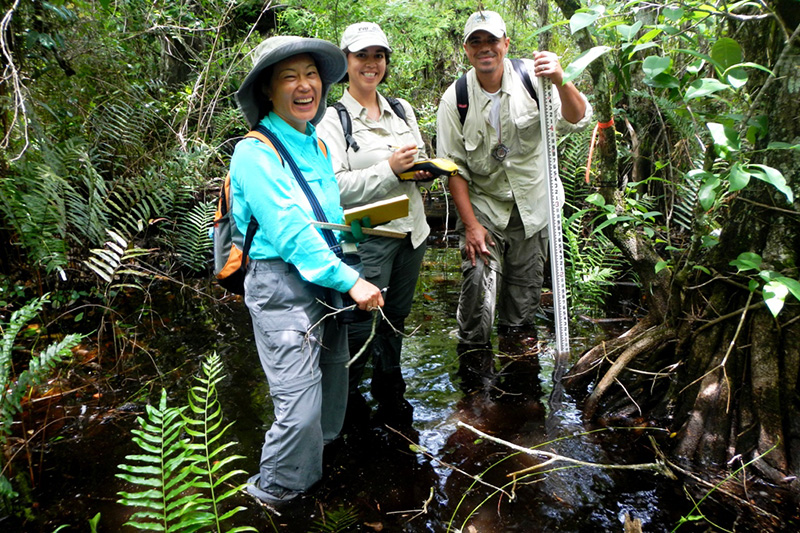
15.2 Manage and protect forests
Through conservation, community forest management, species research and new species discoveries, FIU is promoting the sustainable management of forests all across the world. Find out more on FIU's efforts to manage and protect forests.
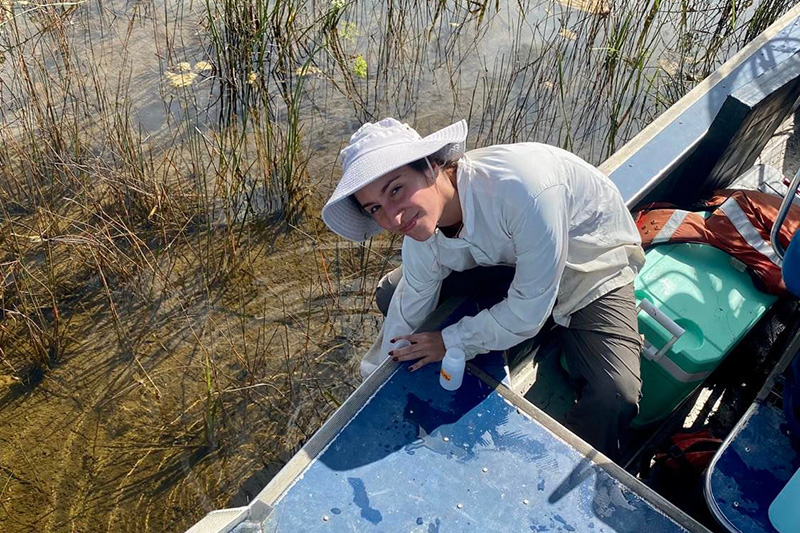
15.3 Restore land and soil
Located in Miami, where the land is subsiding and the seas are rising, FIU is not just researching land degradation. We are living it. Our scientists are focused on developing solutions for environmental resilience here and all across the planet. Find out more about our efforts to tackle peat soil collapse, the disappearing permafrost of the tundra and more. Find out more on FIU's efforts to restore land and soil.
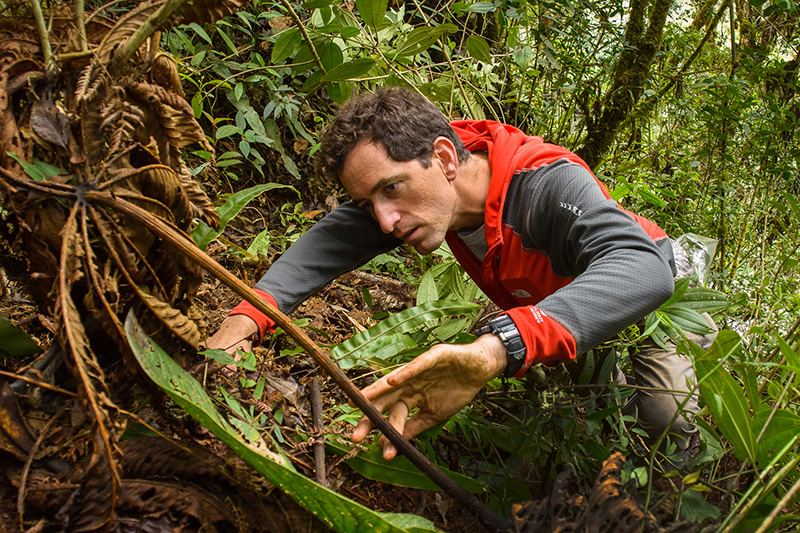
15.4 Conserve mountain ecosystems
From high atop the Andes to the mountainous regions of China, FIU researchers work in the toughest of terrains, discovering new species and protecting the plants and animals that give life to these biodiversity hotspots. Find out more on FIU's efforts to conserve mountain ecosystems.
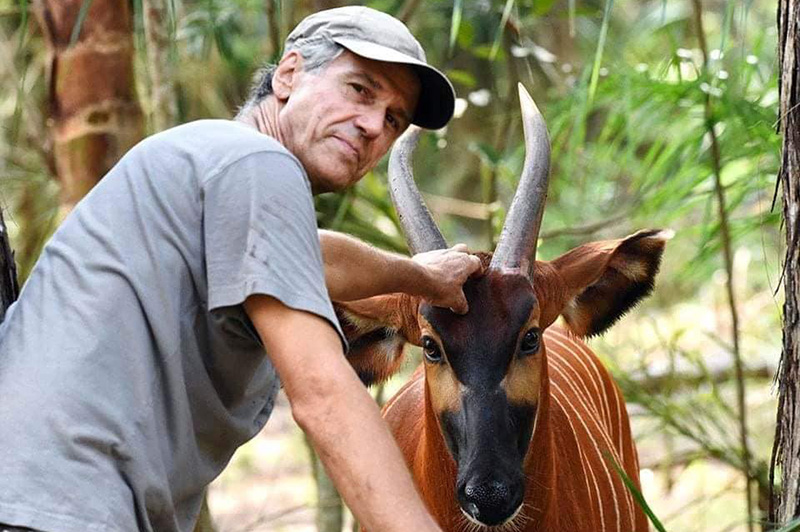
15.5 Reducing degradation of natural habitats
From in-the-field conservation to innovative captive breeding programs,, FIU scientists are leading global initiatives to save species, establish protected habitats and provide the science needed to reverse the degradation of natural habitats on every single continent. Find out more on FIU's efforts to reduce degradation of natural habitats.

15.6 Promote access to genetic resources
FIU researchers are rapidly adding to global knowledge about the world’s plants, animals and ecosystems they occupy, including scientific understanding of species, identification of previously unknown species, disturbances and threats, conservation opportunities, and genetic innovations that could lead to a more sustainable future. Find out more on FIU's efforts to promote access to genetic resources.

15.7 End poaching and trafficking
FIU leads international campaigns in the fight against illegal trafficking of wild orchids, sharks, turtles, tropical birds and even pangolins, the world’s most trafficked mammal. The innovations in DNA science and technology being developed here can be used to protect species anywhere. Find out more on FIU's efforts to end poaching and trafficking.
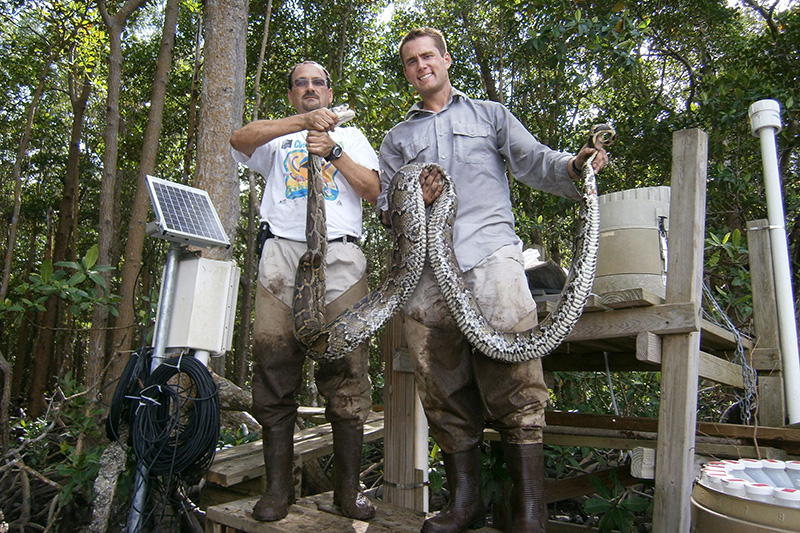
15.8 Prevent invasive species
From the Florida Everglades to the illegal wildlife trade in Asia, FIU scientists are providing the science to improve wildlife management strategies, trafficking interventions and other tactics to combat existing and prevent new introductions of invasive species to ecosystems. Find out more on FIU's efforts to prevent invasive species.
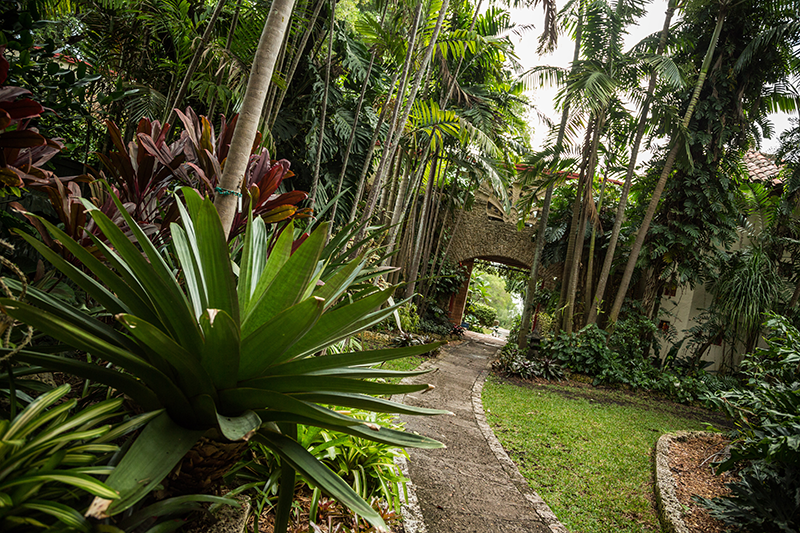
15.9 Integrate ecosystem and biodiversity values
FIU researchers are developing assessment frameworks for determining inclusion of biodiversity in Strategic Environmental Assessments, identifying new methods for cross-collaborations in research and providing the scientific data needed to evaluate ecosystem and biodiversity values. Find out more on FIU's efforts to integrate ecosystem and biodiversity values.
15.a-c Mobilize resources
Providing the science, tools and training needed for Life on Land, FIU researchers are developing low-cost solutions and expertise needed to conserve biodiversity, sustainably manage ecosystems and combat illegal wildlife trafficking of species of all kinds. Find out more on FIU's efforts to mobilize resources.
Target 15.1 Conserve and restore
By 2020, ensure the conservation, restoration and sustainable use of terrestrial and inland freshwater ecosystems and their services, in particular forests, wetlands, mountains and drylands, in line with obligations under international agreements
- The Florida Everglades
Researchers in FIU’s Institute of Environment are leading the science behind one of the largest ecosystem restoration projects on the planet — the Florida Everglades. Designed to improve water quality and restore the hydrology and ecology of this iconic and imperiled ecosystem, restoration efforts stretch from Central Florida to Florida Bay, covering more than 18,000 square miles.
For more than 40 years, our scientists have been conducting research on all aspects of the Everglades including ecosystem health, water quality, ecosystem function and services, biodiversity value, plant life, animal life and much more. Nearly 30 years ago, our scientists set the water quality standard by advising the restriction of phosphorous to 10 parts per billion for Everglades National Park — a standard incorporated into the federal Comprehensive Everglades Restoration Plan and a standard that is still in place today.
Currently, 102 FIU faculty, staff and students work in the Florida Everglades, guiding management, restoration and protection. The FIU Institute of Environment leads the NSF-supported Florida Coastal Everglades Long Term Ecological Research program, a network of 19 universities, 8 government agencies, two NGOs and one institute. In addition to solutions-focused research initiatives, the FCE-LTER has collected the most comprehensive and long-term data on the Everglades, providing a critical baseline for gauging effectiveness of current and future management strategies.
And our scientists are always prepared and quick to engage when extreme events strike to further threaten the Everglades’ survival. This can include fast and unpredictable events like hurricanes, fires, cold snaps and droughts or more lingering threats such as saltwater intrusion.
More than 8 million people rely on the Florida Everglades for their drinking water, and Florida’s thriving economy hinges on an abundant supply of freshwater. The Florida Everglades is the largest subtropical wilderness in the United States and has helped shape natural heritage, culture and economies. It is home to incredible biodiversity including many threatened and endangered species. At FIU, the Everglades is more than an ecosystem we care about. The Everglades is part of who we are.
- The Amazon
Human impacts on the Amazonian Forest have long threatened this iconic and globally important ecosystem. Researchers from FIU’s Institute of Environment are leading efforts to assess the biodiversity of the Amazon including plants, insects, fish, amphibians, birds and mammals.
Our work in plant chemical defense has led to the most comprehensive chemical evaluation of any tree genus, which could help improve strategies for the discovery and development of novel medicines and pesticides and improve staple crops.
Our herpetologists are researching new methods and strategies to help frogs and other amphibians survive on this changing planet. Their work has also led to the discovery of at least 45 new species of amphibians, along with 7 species of previously unknown reptiles, a diatom and a spider.
Our bird and mammal conservation efforts combine in-the-field research and captive breeding programs to help secure futures for threatened and endangered Amazonian species. We are also using spatial modeling to help direct local conservation efforts to the most threatened areas.
Our biodiversity research goes beyond species counts. FIU scientists are studying trophic interactions among trees, fungi, earthworms, ants and spiders because they know there’s a strong association between the Amazon’s mightiest trees and its tiniest residents.
- Luquillo, Puerto Rico
Since 1988, scientists from FIU’s Institute of Environment have studied the long-term effects of natural and human disturbances on tropical forests and streams in the Luquillo Experimental Forest — ranging from the peaks of the Luquillo Mountains to the coastal ecosystems of San Juan. This site is uniquely valuable as a forested mountainous landscape on a tropical island in the midst of a Caribbean biodiversity hotspot — a natural laboratory for understanding ecosystem change in the tropics. This NSF-supported Long-Term Ecological Research program focuses on the effects of disturbances, including hurricanes, landslides and drought, forest harvesting and long-term climate patterns within this landscape.
The research conducted at this site has improved understanding of montane tropical forest ecosystems, and has reached the scientific community, policymakers and general public. It has also provided a foundation for complementary research efforts including the National Science Foundation’s Critical Zone Observatories and Urban Long Term Research Areas programs; the U.S. Geological Survey’s Water, Energy and Biogeochemical Budgets; and the Center for Tropical Forest Studies in its comparisons of tropical forests around the world.
- Tropical Rivers
From the Amazon Basin to East Africa, scientists from FIU’s Institute of Environment collaborate with global networks to understand freshwater systems including their social and ecological connections. They are leading collaborative research across the Amazon Basin to understand the dynamics of river flow and the human dependencies on river ecosystems. They are piloting low-cost remote sensors for sustainable water management in the Andes.
Our researchers also support efforts in Tanzania to inform water management practices and to further understanding of freshwater ecosystems and their connections to people. This includes kinship, reciprocity networks, sacred forests, traditional water management practices, and international cooperation – all knowledge that can be put to work for watershed management and conservation.
In Ethiopia, FIU scientists are using hydrological modeling to identify new ways to safeguard the Nile River amid increasing pressure from climate change, deforestation and drought. These same scientists organized the 2020 International Conference on the Nile and Grand Ethiopian Renaissance Dam, where scientists from six continents shared research and knowledge for improved management strategies. Since the 2020 conference, FIU has formed the Nile Talk Forums, a monthly online gathering of experts in Nile and other transboundary river issues that is open to the public.
FIU scientists are also studying the effects of energy production and mineral exploration on conservation and advocating for indigenous peoples’ stewardship. At the same time, they are advocating for greater protections for tropical rivers worldwide because of their roles in sustaining ecologically important forests and the people who live near them.
Target 15.2 Manage and protect forests
By 2020, promote the implementation of sustainable management of all types of forests, halt deforestation, restore degraded forests and substantially increase afforestation and reforestation globally
- Community Forest Management
Scientists from FIU’s Institute of Environment are researching community forest management in Mexico and Central America as well as natural resource and ecosystem management in Latin America. Their 30 years of research on these issues offer support to the idea that people and land benefit when indigenous people and local communities control their forests for commercial timber production. Their research takes into account the biodiversity in these forests, supply and demand, carbon capture, economic impact and government support. Today, these researchers advocate for community forest management as a market-oriented way to stop deforestation and conserve biodiversity.
- Post-logging Forest Recovery
Forests across the globe are in a perpetual cycle of exploitation and recovery, characterized by a mosaic of diminished biodiversity and altered ecosystem function. These forest tracts, often termed “secondary,” now comprise the majority of the world’s forests. Despite their degraded state, they still harbor great potential for the restoration of rare and economically important species, as well as ecosystem services including carbon storage.
Although the most cited examples of these secondary forests are in the tropics, South Florida also claims remnant natural areas that were heavily logged in the 19th and 20th centuries. Together with partners at Big Cypress National Preserve, FIU scientists are conducting a pilot study on forest recovery in logged cypress strands, using GIS analyses, aerial photographs, and archival documents to understand the cypress swamps in their pre-disturbance condition. At the same time, we are collaborating with CASE Education Outreach and Coral Gables Museum to provide a framework that can be used to educate the public about environmental history and historic resource management practices in South Florida.
Target 15.3 Restore land and soil
By 2030, combat desertification, restore degraded land and soil, including land affected by desertification, drought and floods, and strive to achieve a land degradation-neutral world
- Peat Collapse
Peat soil is the building block of the Florida Everglades, and it is in trouble. Peat soil collapse can trigger a vicious cycle of more severe storm surge, saltwater intrusion and decreased water quality. This could also mean the release of large amounts of carbon. FIU scientists are investigating the impacts of peat collapse, strategies for mitigating these impacts and strategies for stopping further collapse. Their research shows a loss in land elevation due to peat collapse in the Everglades, an area already at-risk to rising sea levels. But they’ve also identified a potential solution to intervene — improved delivery of freshwater to the Everglades to combat increased salinity. The researchers are also collecting data to identify and detect areas vulnerable to future collapse and inform management strategies.
- Land Subsidence
Our researchers are studying an urgent concern facing coastal communities across the globe — land subsidence and sea level rise. This is a naturally occurring, very slow movement of the ground that happens through the accumulation of sediment from mud or volcanoes, as well the vertical movement of the earth’s crust. Few studies have examined subsidence in relation to sea level rise, yet subsidence information is critical to making more accurate flooding predictions. With Miami being ground zero for sea level rise, FIU scientists are leading research to inform management and identify long-term solutions.
- The Tundra Permafrost
Temperatures are increasing in the Arctic at more than double that of the global average. Shrubs are getting bigger. Plant populations are changing. Animals are changing their diets. We know this because scientists from every Arctic country in Europe, Asia and North America have been working together for 30 years, carrying out coordinated experiments to examine vegetation change across the tundra biome as part of the International Tundra Experiment (ITEX). FIU scientists serve as the lead for North America ITEX. These researchers know better than most what a warming planet looks like.
Traditionally, plants in Arctic’s tundra region are low-lying and grow very slowly because of their very short growing season. But as temperatures warm, the growing season is beginning earlier. Some plants are moving into areas they did not occupy before, and species composition is changing. These changes have not been swift and easily could’ve gone unrecognized. But ITEX is doing what it was designed to do — documenting and providing understanding on the impacts of climate change to this vast, treeless region with its frozen subsoil. This research is informing the scientific community and policymakers about realized changes happening in the Arctic and what the world should expect for the future of the Arctic.
Target 15.4 Conserve mountain ecosystems
By 2030, ensure the conservation of mountain ecosytems, including their biodiversity, in order to enhance their capacity to provide benefits that are essential for sustainable development
- Mt. Kenya and the Mountain Bongo Antelope Repatriation Project
FIU scientists are leading an international effort to save the critically endangered mountain bongo antelope of Kenya. The Mountain Bongo Repatriation Project represents a rare milestone in wildlife conservation, aiming to restore a critically endangered flagship species to self-sustaining levels in the wild from captive U.S. stock. We are on the verge of restoring a sustainable wild bongo population in the Mt. Kenya World Heritage Site with the recent establishment of The Meru Bongo & Rhino Conservation Trust in Kenya. This effort is helping to protect Mt. Kenya and with it, the high-mountain ecosystem that supplies 80 percent of Kenya’s people with clean, fresh water.
In collaboration with Meru County Government, Ntimaka and Kamulu Community Forest Associations, Kenya Wildlife Service, Kenya Forest Service, Lewa Wildlife Conservancy, Rare Species Conservatory Foundation (RSCF) and Florida International University's Tropical Conservation Institute, the trust is coordinating recovery of both the Mountain Bongo Antelope and Black Rhinoceros.
These critically endangered flagship species have disappeared from Mt. Kenya's forests but now have renewed hope in the wild thanks to aggressive protection, proven conservation science and conservation breeding and effective population management. The trust will oversee a new sanctuary that will receive bongo antelope from RSCF, currently being bred in semi-wild conditions in Florida.
- Andes Mountains
Scientists from FIU’s Institute of Environment are going to the far corners of the world and the highest reaches of the Andes Mountains to study and protect frogs in their natural environments and commercially managed areas. Our research teams are also searching for biodiversity, identifying new species of amphibians in previously unexplored parts of the Amazon. One researcher alone has accounted for the discovery of 45 new species of amphibians, along with 7 species of previously unknown reptiles, a diatom and a spider.
Recently, FIU scientists were also part of an international collaboration to expedite the establishment of nine new protected areas in Peru within the Amazonian lowlands and Andean foothills bordering Brazil, Colombia and Ecuador.
As an increasing number of frog species are threatened with extinction, this work is becoming ever-more critical in helping protect the frogs we know should populate certain areas as well as the ones we don't yet know exist. This research is helping to guide conservation strategies all across the tropics.
- Tropical China
Researchers from FIU’s International Center for Tropical Botany are investigating the impacts of climate change on rare and threatened species, how to conserve heavily exploited plant species, and the role of biotic interactions in population persistence and expansion. Their work is conducted in tropical communities around the world including the mountainous terrain of southern China. They are also working on rare plant restoration of endangered orchids and serve as part of the IUCN SSC Orchid Specialist Group and the wild orchid trade subgroup. These researchers are also investigating violations of CITES protection for wild orchids in Asia and fighting to close policy gaps that only prioritize animals. Their research continues to inform conservation strategies and management of some of the world’s rarest plants.
Target 15.5 Reducing degradation of natural habitats
Take urgent and significant action to reduce the degradation of natural habitats, halt the loss of biodiversity and, by 2020, protect and prevent the extinction of threatened species
- Mountain Bongo Antelope Repatriation Project
FIU scientists are leading an international effort to save the critically endangered mountain bongo antelope of Kenya. The Mountain Bongo Repatriation Project represents a rare milestone in wildlife conservation, aiming to restore a critically endangered flagship species to self-sustaining levels in the wild from captive U.S. stock. We are on the verge of restoring a sustainable wild bongo population in the Mt. Kenya World Heritage Site with the recent establishment of The Meru Bongo & Rhino Conservation Trust in Kenya. This effort is helping to protect Mt. Kenya and with it, the high-mountain ecosystem that supplies 80 percent of Kenya’s people with clean, fresh water.
In collaboration with Meru County Government, Ntimaka and Kamulu Community Forest Associations, Kenya Wildlife Service, Kenya Forest Service, Lewa Wildlife Conservancy, Rare Species Conservatory Foundation (RSCF) and Florida International University's Tropical Conservation Institute, the trust is coordinating recovery of both the Mountain Bongo Antelope and Black Rhinoceros.
These critically endangered flagship species have disappeared from Mt. Kenya's forests, but now have renewed hope in the wild thanks to aggressive protection, proven conservation science and conservation breeding and effective population management. The trust will oversee a new sanctuary that will receive bongo antelope from RSCF, currently being bred in semi-wild conditions in Florida.
- Pangolins, the World's Most Trafficked Mammal
FIU is leading Operation Pangolin, an international collaboration to save the world’s most trafficked and largely unknown wild mammal.
Many solutions to environmental degradation focus on “hotspots” and have failed to consider the complex drivers of biodiversity declines. Many solutions have also failed to achieve the necessary regional and global scale to make impactful and sustainable conservation gains. No group of species on the planet so perfectly embodies these failures as pangolins.
These evolutionarily distinct and globally endangered mammals are in dire need of urgent conservation action. Yet, scientists and policymakers lack sophisticated understanding about the pangolin scale and meat trafficking supply chains, which move an estimated 250,000 pangolins a year out of African and Asian forests to consumers in China, Vietnam, and even western Europe and the United States. The collateral impacts of trafficking on socio-environmental health compound the already significant species conservation ramifications and put the global human community at risk.
Pangolin range states and conservation governing bodies including CITES and IUCN have declared that developing pangolin-specific monitoring methods linked to anti-trafficking efforts is the highest conservation priority for pangolins.
The knowledge and data gaps have prevented the design of robust monitoring and management programs for wild pangolin populations and interventions for combating wildlife crime. Operation Pangolin capitalizes on the latest advances in technology machine-learning, big data, and interdisciplinary team science to develop cost-effective solutions to the global pangolin crisis. This project is taking pangolin conservation from a veritable dark age for cryptic species conservation to having the knowledge to inform appropriate conservation interventions and evidence-informed international policy implementation, all while ensuring the human and technical capacity to manage wildlife populations and their habitats.
We are focused on reducing the extinction-risk and laying the groundwork for population growth in pangolins and other critically endangered species of global concern. Under Operation Pangolin’s global umbrella, we are ensuring the synergistic benefits of collaboration, data generation, and information sharing give the world’s eight pangolin species the best chance of survival.
- Tropical Amphibians
Scientists from FIU’s Institute of Environment are going to the far corners of the world and the highest reaches of the Andes Mountains to study and protect frogs in their natural environments and commercially managed areas. Our research teams are also searching for biodiversity, identifying new species of amphibians in previously unexplored parts of the Amazon. One researcher alone has accounted for the discovery of 45 new species of amphibians, along with 7 species of previously unknown reptiles, a diatom and a spider. These discoveries are a critical first step for conservation of species previously unknown to scientists and policymakers.
Recently, these same scientists were also part of an international collaboration to expedite the establishment of nine new protected areas in Peru within the Amazonian lowlands and Andean foothills bordering Brazil, Colombia and Ecuador.
As an increasing number of frog species are threatened with extinction, this work is becoming ever-more critical in helping protect the frogs we know should populate certain areas as well as the ones we don't yet know exist. This research is helping to guide conservation strategies all across the tropics.
- Africa's Slender-Snouted Crocodiles
FIU researchers are working to restore populations of two species of slender-snouted crocodiles in Africa. Long thought to be one species, these crocodiles were considered one of the most endangered crocodiles on the entire continent. But while conducting DNA research as part of routine conservation work, the scientists discovered the critically endangered population was actually comprised of two distinct species — the West African slender-snouted crocodile and the newly identified Central African slender-snouted crocodile, the first new living crocodile species to be defined and named in nearly 85 years.
Efforts are now focusing on captive breeding and reintroduction programs to help save these crocodiles from extinction. The scientists are researching national parks and forest reserves that could serve as reintroduction sites along the Ivory Coast. And in recent years, a breeding colony of 34 West African slender-snouted crocodile adults produced 42 hatchlings, a sign of hope for these critically endangered reptiles.
- Parrots
FIU’s Tropical Conservation Institute (TCI) is involved in an array of parrot conservation efforts in South America and the Caribbean to protect this threatened and highly trafficked taxa. The Rare Species Conservatory Foundation, under the direction of a top conservation biologist and FIU research scientist, has led a 30-year captive-breeding program for the Red-browed parrot — South America’s most endangered Amazon parrot — and maintains the only breeding group in North America. Starting with 11 birds 30 years ago, these scientists have helped produce a self-sustaining captive population and integrated recovery techniques and methods with Brazilian partners. The Red-brow is now recovering in the wild.
On Dominica, this same team is engaging local NGOs and Forestry Division personnel to reinstate the longstanding Wildlife Conservation Partnership that, for the past 26 years, supported protection of Dominica’s national bird — the Imperial Parrot. Recently, TCI was approached by an indigenous Kalinago graduate student from the University of the West Indies to advise and co-develop Imperial parrot population surveys.
On St. Vincent, TCI provided supplies and support following the devastating eruption of the Soufriere volcano. We are now working with the Vincentian government to monitor parrots, offer capacity building opportunities to their Forestry personnel and train students in wildlife monitoring methods.
- Endangered Orchids
Researchers from FIU’s International Center for Tropical Botany are investigating the impacts of climate change on rare and threatened species, how to conserve heavily exploited plant species, and the role of biotic interactions in population persistence and expansion. From South Florida to southern China, their work is conducted in tropical communities all across the world. They are also working on rare plant restoration of endangered orchids and serve as part of the IUCN SSC Orchid Specialist Group and the wild orchid trade subgroup. These researchers are also investigating violations of CITES protection for wild orchids in Asia and fighting to close policy gaps that only prioritize animals. Their research continues to inform conservation strategies and management of some of the world’s rarest plants.
- Tree Snails
Florida's subtropical forests were once dripping with tree snails that National Geographic referred to as "living jewels." Predation by invasive species, along with existing and historical pressures on tree snails, is continuing to accelerate the decline of tree snail populations and may lead to local extirpation. FIU scientists are working to preserve native snails' and restore their status as iconic South Florida fauna. They monitor the populations of both tree snails and their invasive predators to understand their interactions and conservation needs.
In addition, we are collaborating with local stakeholders, from government agencies to private landowners, to develop measures that directly protect tree snails from predation by invasive species — specifically, several invasive species of snail-eating land planarians that have rapidly spread across South Florida and other tropical regions, causing both snail population decline and extinction events.
- The Florida Everglades
Researchers in FIU’s Institute of Environment are leading the science behind one of the largest ecosystem restoration projects on the planet — the Florida Everglades. Designed to improve water quality and restore the hydrology and ecology of this iconic and imperiled ecosystem, restoration efforts stretch from Central Florida to Florida Bay, covering more than 18,000 square miles.
For more than 40 years, our scientists have been conducting research on all aspects of the Everglades including ecosystem health, water quality, ecosystem function and services, biodiversity value, plant life, animal life and much more. Nearly 30 years ago, our scientists set the water quality standard by advising the restriction of phosphorous to 10 parts per billion for Everglades National Park — a standard incorporated into the federal Comprehensive Everglades Restoration Plan and a standard that is still in place today.
Currently, 102 FIU faculty, staff and students work in the Florida Everglades, guiding management, restoration and protection. The FIU Institute of Environment leads the NSF-supported Florida Coastal Everglades Long Term Ecological Research program, a network of 19 universities, 8 government agencies, two NGOs and one institute. In addition to solutions-focused research initiatives, the FCE-LTER has collected the most comprehensive and long-term data on the Everglades, providing a critical baseline for gauging effectiveness of current and future management strategies.
And our scientists are always prepared and quick to engage when extreme events strike to further threaten the Everglades’ survival. This can include fast and unpredictable events like hurricanes, fires, cold snaps and droughts or more lingering threats such as saltwater intrusion.
More than 8 million people rely on the Florida Everglades for their drinking water, and Florida’s thriving economy hinges on an abundant supply of freshwater. The Florida Everglades is the largest subtropical wilderness in the United States and has helped shape natural heritage, culture and economies. It is home to incredible biodiversity including many threatened and endangered species.
- Amazonian Lowlands and Andean Foothills
FIU herpetologists helped gather the critical information needed to expedite the establishment of nine new protected areas in one of the most biologically diverse regions of Peru. As part of an international team focused on biological rapid inventory of amphibians and reptiles, their efforts helped quadruple the previous number of protected areas in Loreto, an expanse of Amazonian lowlands and Andean foothills bordering Brazil, Colombia and Ecuador. More than just scientists, FIU researchers are working all across the world to advocate for protected areas to help secure a future for the planet’s biodiversity.
- Nosy Be Island, Madagascar
Nosy Be Island, off the northwest coast of mainland Madagascar, is a wildlife hotspot and tourist destination. The clearing of most of the Island’s forests for agriculture, and the unsustainable use of its coastal waters is threatening many of the unique and endangered wildlife that inhabits it.
Our scientists are monitoring the status, and identifying the factors affecting the abundance and distribution of marine and terrestrial flagship species on Nosy Be Island. This long-term project uses an island approach and focuses on species listed as Endangered on the IUCN Red List of Threatened Species, including Humpback dolphins, Hawksbill turtles , Nosy Be’s Sportive lemur, Claire’s Mouse lemur and Black lemurs.
- Wakal Basin, India
As part of FIU’s International Water Program in the Institute of Environment, scientists developed a Biodiversity Action Plan for the Wakal Basin in India. Terrestrial biodiversity is thought to be high in several parts of the area, including the Phulwari Moll Reserve, which harbors hundreds of species of plants and was declared one of India’s Important Bird Areas by Bird Life International. Little is known about aquatic biodiversity there, as few collections have been made from the basin’s surface water resources. However, as one of the last bodies to contain water late into the dry season, the Wakal River is thought to serve as a refuge area for aquatic biota, especially during drought periods. FIU scientists worked with local ecologists to document aquatic biodiversity and develop strategic actions for protecting biodiversity in the basin.
Target 15.6 Promote access to genetic resources
Promote fair and equitable sharing of the benefits arising from the utilization of genetic resources and promote appropriate access to such resources, as internationally agreed
- Institute of Environment and Biodiversity
In some systems, the pace of extinctions is accelerating more rapidly than our ability to even discover and understand species currently unknown to science. This also means their potential contributions to public health, food security and mitigation of global changes would be lost with them. At FIU, the Institute of Environment is one of the largest global groups of biodiversity scientists working across ecosystems from ridge to reef. We are describing and monitoring species and communities of plants, microbes, amphibians, reptiles, fish and mammals all across the globe - from the Caribbean across the Amazon to Southeast Asia and the Pacific. In so doing, we are improving our understanding of current biodiversity and its contributions to ecosystem services.
By sharing what we learn with scientists, conservationists, policymakers, governments and others, we are providing the foundation for conservation and management of threatened species and habitats across the world. And as a byproduct of this effort, we are helping to preserve possible biodiversity value, ecosystem services and opportunities to support and promote a more sustainable future.
- FIU International Center for Tropical Botany
FIU’s International Center for Tropical Botany at the Kampong is a core component of the Institute of Environment’s Land and Biodiversity Division, developing research, education and outreach programs related to tropical botany. The team works on projects that integrate three key research themes — tropical plant diversity; conservation and management of threatened tropical plant species and habitats; and products and services generated by tropical plants, including foods, fibers, fuels and medicines.
The International Center for Tropical Botany is located in Coconut Grove, Florida, adjacent to The Kampong, one of five gardens that make up the National Tropical Botanical Garden. The Kampong is where famed botanist David Fairchild lived and performed much of his research, and where many of his historical plant collections still exist today, making it an ideal location to further botanical research and train the next generation of botanists.
- Dissecting Amazonian Diversity
Tropical diversity is extraordinarily high in both French Guiana and the Amazonian basin. In addition, there is a significant change over time in the types of species that live across these areas. Yet, we still know little about the factors underlying species distributions for most species groups.
FIU scientists are currently dissecting Amazonian diversity by enhancing a multiple-taxa approach. This project is providing a comprehensive evaluation of tropical biodiversity across broad geographic and environmental gradients in French Guiana. Our scientists integrate data for eight species groups: plants, arthropods, amphibians, large animals, fish, freshwater invertebrates, earthworms and fungi. Studying these groups simultaneously for the same sites for the first time, we are generating databases and modeling approaches that contribute to an increased understanding of the factors that influence species change over time in the most diverse ecosystems on earth.
These data are essential for regional estimates of biodiversity, to assist policymakers to choose protected areas across the region, and to improve models of biodiversity dynamics in response to climate and land-use change scenarios.
- Responses to Environmental Change
Throughout the history of life on earth, organisms have experienced rapid changes in their environments. Many populations have persisted in the face of ancient climatic fluctuations, and others have experienced environmental change as they disperse and establish on new continents and islands, with successful colonizers often radiating into new branches on the tree of life. In the modern world, human activities are dramatically altering many environments, and it is important to be able to predict the effects of these changes on the viability of populations.
FIU researchers are building on an existing transplant experiment that moved Anolis lizards from a single source population to islands in the Panama Canal that vary in habitat structure and local climate. This research tests how a tropical forest lizard can respond to climate change by establishing experimental populations on islands in the Panama Canal. These islands are hotter and more variable than the mainland rainforests of the source populations. This research is providing new insight for ecology and evolutionary biology.
Target 15.7 End poaching and trafficking
By 2030, increase the economic benefits to Small Island developing States and least developed countries from the sustainable use of marine resources, including through sustainable management of fisheries, aquaculture and tourism
- Wildlife Trafficking Intervention Program
The illegal trafficking of wildlife and overexploitation of plant and animal species represent a major threat to biodiversity. Our scientists are actively involved in the Convention on International Trade in Endangered Species of Wild Fauna and Flora, supporting efforts to protect species through science and advocacy. FIU’s Tropical Conservation Institute and Global Forensic and Justice Center have also partnered to develop new detection methods and intervention strategies to disrupt the illegal pet trade, trafficking of endangered species, and the market for endangered animal parts. To date, our researchers have developed rapid, in-field DNA detection kits that can be used at ports of entry to identify illegally trafficked species and to also identify their points of origin. We are providing this information to government officials for investigating and prosecution of traffickers.
- Pangolins, the World's Most Trafficked Mammal
FIU is leading Operation Pangolin, an international collaboration to save the world’s most trafficked wild mammal.
These evolutionarily distinct and globally endangered mammals are in dire need of urgent conservation action. Yet, scientists and policymakers lack sophisticated understanding about the pangolin scale and meat trafficking supply chains, which move an estimated 250,000 pangolins a year out of African and Asian forests to consumers in China, Vietnam, and even western Europe and the United States. The collateral impacts of trafficking on socio-environmental health compound the already significant species conservation ramifications and put the global human community at risk. Pangolin range states and conservation governing bodies including CITES and IUCN have declared that developing pangolin-specific monitoring methods linked to anti-trafficking efforts is the highest conservation priority for pangolins.
The knowledge and data gaps have prevented the design of robust monitoring and management programs for wild pangolin populations and interventions for combating wildlife crime. Operation Pangolin capitalizes on the latest advances in technology machine-learning, big data, and interdisciplinary team science to develop cost-effective solutions to the global pangolin crisis.
- Primates
Deforestation and poaching are plaguing the world’s primate populations and the pet trade is a particular problem for some of the world’s smallest monkeys.
Our captive-breeding and management efforts are part of a broad conservation network that helps ensure a future for tamarins and pygmy marmosets. FIU research scientists have participated in the international Lion Tamarin Conservation Program for more than 25 years. This program works closely with agencies in Brazil to protect wild populations and expand protected areas. Our efforts in small primate conservation also benefit the pygmy marmoset, a monkey so small it fits in the palm of a human hand. The Rare Species Conservatory Foundation, a partner of FIU’s Tropical Conversation Institute, is led by FIU scientists and maintains North America’s largest pygmy marmoset colony.
- Matamata Turtles
Using a rapid DNA testing toolkit developed by FIU researchers, Colombian officials recently stopped an illegal shipment of 2,200 Matamata turtles and returned them to the Orinoco river basin. A team of Colombian scientists and authorities at the International Airport Alfredo Vásquez Cobo in Leticia first identified the suspicious shipment of freshwater baby turtles.
Matamata turtles are native to South America and are most recognizable by their rough, knobby shell and snorkel-like snout. It is illegal to trade Matamata turtles in Colombia, where they are currently listed as a near threatened species. But each year, thousands of these bizarre-looking animals end up in the hands of traffickers and end up in foreign pet markets where they can be legally sold, sometimes costing upwards of $300.
When the shipment of bizarre-looking turtles turned up in Leticia, customs officials knew immediately they were looking at a protected species. What they didn’t know is what species of Matamata they were looking at.
Originally thought to be a single species, a recent discovery revealed there are actually two genetically distinct species of Matamata turtles. Virtually identical in appearance, one species exclusively resides in the Orinoco river basin and the other in the Amazon River basin. Quick identification is important so recovered turtles can be returned to their correct river basin. Introducing an Orinoco turtle to the Amazon River basin — or vice versa — could have negative effects that would ripple throughout that entire native turtle population, affecting evolutionary processes and genetic health.
In the past, customs officials would transport a few confiscated turtles to a lab for DNA testing. While they would wait for results, they were also trying to keep thousands of turtles alive. This time, they decided to give the FIU DNA toolkit a try. Originally developed to identify endangered species in the shark fin trade, the toolkit can be used to identify any animal or animal part being trafficked through international ports. Colombian officials were able to determine the correct species of Matamata turtle on-site in less than two hours and then transport them to their correct river basin, giving them the best chance of survival. The cost for the test is about $1 per sample.
- Orchids
The demand for orchids could be driving wild orchids to extinction in southern China. Our researchers are trying to reverse this trend. They led the first-ever study of the wild orchid trade in southern China, and found illegal activity is more widespread than originally believed. It’s also reaching into other countries. Many species found in the markets weren’t native, but from neighboring countries including Laos, Burma and Vietnam. Currently, the wild orchid trade in China is unregulated. While all 29,000 orchid species are listed by CITES, only animals listed on that register are automatically protected under Chinese law. This has created a policy gap that can only be closed with concrete evidence. This study sounded the alarm, providing officials with the information to inform policy changes.
Target 15.8 Prevent invasive species
By 2020, introduce measures to prevent the introduction and significantly reduce the impact of invasive alien species on land and water ecosystems and control or eradicate the priority species
- Asian Swamp Eels in the Everglades
While populations of native fishes in the Florida Everglades are tied to the system's natural hydrological dynamics, Asian Swamp Eels are drought-resistant fish first reported in Florida in 1997. Within a decade, they started showing up in the Everglades. Using a 26-year dataset that included a 13-year baseline period prior to swamp eel arrival in Taylor Slough, FIU scientists assessed population changes of common small fishes and decapods that are important prey for larger vertebrate predators.
After invasion, populations of several species suffered significant declines. Species most strongly reduced were those dependent on predator-free habitats at the onset of the wet season, indicating drought-resistant swamp eels have introduced novel predator effects and disrupted the hydrology-mediated production of aquatic animals that are prey for many larger predators. Ongoing Everglades restoration is designed to restore hydrological conditions that support production of crayfishes and fishes, and nesting wading birds reliant on them. Water management may have facilitated the invasion of swamp eels. These results provide critical information for ecosystem management and are a crucial first step for guiding strategies to intervene in what could be a potentially devastating disruptor to the Comprehensive Everglades Restoration Plan.
- Burmese Pythons in the Everglades
A scientist from FIU’s Institute of Environment recently conducted a system-wide assessment of the broad and diverse population control efforts being used to fight the growing invasion of Burmese pythons in the Florida Everglades. The goal of the research is to help guide management of this growing threat to the already imperiled ecosystem. The Florida Everglades is a fragile coastal wetland undergoing a decades-long, large-scale ecological restoration. Stressed by diminished freshwater flow and water diversion for agricultural activities and urbanization, the health of this vast ecosystem is also threatened by the presence of a large number of invasive species including the Burmese python. These large constrictors were introduced to South Florida through the pet trade and first sighted in Everglades National Park in the 1980s. Pythons are naturally camouflaged there, making it an excellent environment for propagation of these huge predators. This top predator has severely disrupted the food web, consuming mammals, birds and other reptiles. The scientist agrees with others that eradication is all but impossible for the python, and advocates for increased containment efforts including paid professional hunters and innovative control methods such as chemical synthesis of the female python’s pheromone. The Burmese python issue is only growing in South Florida and research such as this can help management officials redirect efforts to strategies that are proving effective.
- Pablo Escobar's Hippos
Four African hippos imported by Pablo Escobar to his native Colombia have resulted in a potential ecological disaster for Colombia's largest and most important river system. When the drug trafficker was killed in a 1993 shootout with Colombian police, his private collection of exotic animals was seized and taken to zoos — except for the hippos which were too large and too heavy to transport. Abandoned, they spread along the Magdalena river and multiplied, spending the majority of their time in the water.
FIU researchers are studying the impacts of these non-native hippos to address the environmental challenges caused by them and the significant amount of waste they produce on a daily basis. Currently, there are about 50 hippos roaming freely in the region, but our researchers estimate that number could skyrocket to anywhere between 400 and 800 hippos by 2050. While local residents have grown fond of the hippos, their ecological impact will grow as their numbers grow. FIU scientists are amassing the information needed to guide a future management strategy for protecting the Magdalena River.
- Zebra Mussel
FIU scientists are part of a collaborative team studying ecosystem function in lakes invaded by zebra mussels, an invasive species that can restructure food webs through benthification. Biologists have very limited understanding of general patterns of spread and impact of biological invitations with the exception of the zebra mussel. By efficiently consuming phytoplankton, zebra mussels can increase light penetration and nutrient concentrations in the benthos of a lake, thereby stimulating growth of benthic periphyton and macroinvertebrates. Yet, few studies monitor the response of these benthic communities to invasion. This team documented early changes in phytobenthos and zoobenthos as zebra mussels invaded eutrophic Lake Mendota in Wisconsin. Their research is leading to greater understanding of the impacts to ecosystem function as zebra mussels continue to invade and spread among benthic regions of lakes.
- Prescribed Burns
Preserving fire-dependent ecosystems can mitigate biodiversity loss from urbanization, but FIU researchers are studying their effects on managing invasive species. Their preliminary research shows prescribed burns can actually mitigate the spread of invasive species when removal methods factor an invasive species’ response to fire. For example, some species can largely be removed by prescribed fire if their population is low pre-fire. These species could be targeted by forest managers for removal prior to a prescribed burn. But other species, which appeared to do well under burn conditions, should be targeted for removal post-burn to increase opportunities of identifying and eradicating the invasive. While the research is ongoing, FIU researchers are working toward solutions to help reduce the encroachment of invasive species by maximizing effectiveness of management strategies already in place.
Target 15.9
By 2020, integrate ecosystems and biodiversity values into national and local planning, development processes, poverty reduction strategies and accounts
- FIU International Center for Tropical Botany
FIU’s International Center for Tropical Botany at the Kampong is providing the science to inform conservation strategies, management policies and planning for botanical resources in tropical regions. FIU scientists are developing research, education and outreach programs that integrate three key research themes — tropical plant diversity; conservation and management of threatened tropical plant species and habitats; and products and services generated by tropical plants, including foods, fibers, fuels and medicines.
The International Center for Tropical Botany is located in Coconut Grove, Florida, adjacent to The Kampong, one of five gardens that make up the National Tropical Botanical Garden. The Kampong is where famed botanist David Fairchild lived and performed much of his research, and where many of his historical plant collections still exist today, making it an ideal location to further botanical research and train the next generation of botanists.
Featured Experts

Dr. Gaiser is an aquatic ecologist who for 14 years has led the NSF-funded Florida Coastal Everglades Long-term Ecological Research program, responsible for the largest and longest studies on how climate, water and people impact the Florida Everglades. She was named Endowed George M. Barley Jr. Eminent Scholars Chair in 2018. Dr. She is the incoming chair of the LTER Network executive board and a member of the State of Florida’s Blue Green Algae Task Force.

Dr. Crowl is an internationally recognized researcher in the fields of ecology, urban stream ecology and aquatic ecosystems, who has presented solutions about environmental threats to the White House. He is principal investigator on an NSF-funded project (CREST CAChE) focused on aquatic chemistry and water contamination, and also serves as director of the FIU Institute of Environment.

Dr. Liu is a conservation ecologist on a mission to protect the world’s most endangered orchids. She led the first-ever study of the wild orchid trade in southern China, finding it is illegal and more widespread than presumed. Interested in rare plant restoration, she also leads several conservation and restoration research projects.

Dr. Baraloto has spent more than 20 years working in sites across the Amazon and Guiana Shield to understand the factors controlling plant species distributions, and the impacts of global change on forest structure and biodiversity. He is one of the World’s top 2 percent of scientists in the Alper-Doger Scientific Index Rankings for International Tropical Botany.
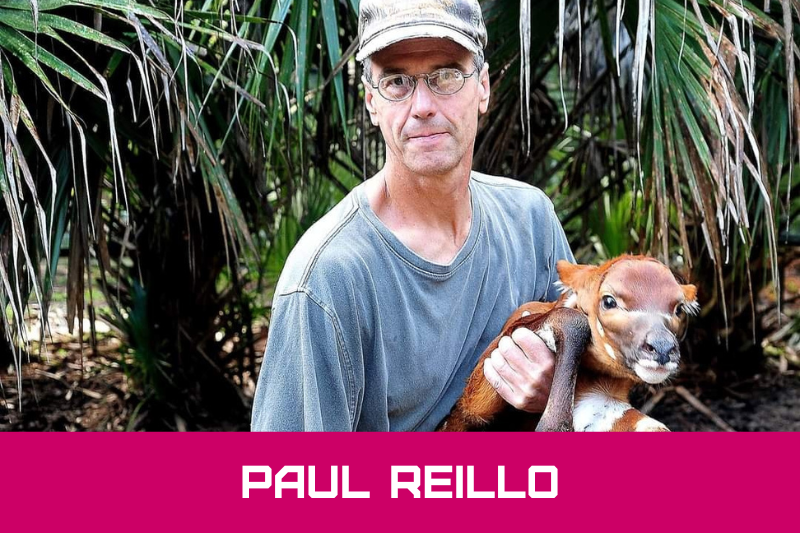

Dr. Donnelly knows amphibians and reptiles can tell us about our changing world. With a mission of protecting the biodiversity of our world, her research is focused on the ecology and evolutionary biology of neotropical amphibians and reptiles. She’s examined the loss of amphibians and reptiles, using Costa Rica as a model for global issues with biodiversity.
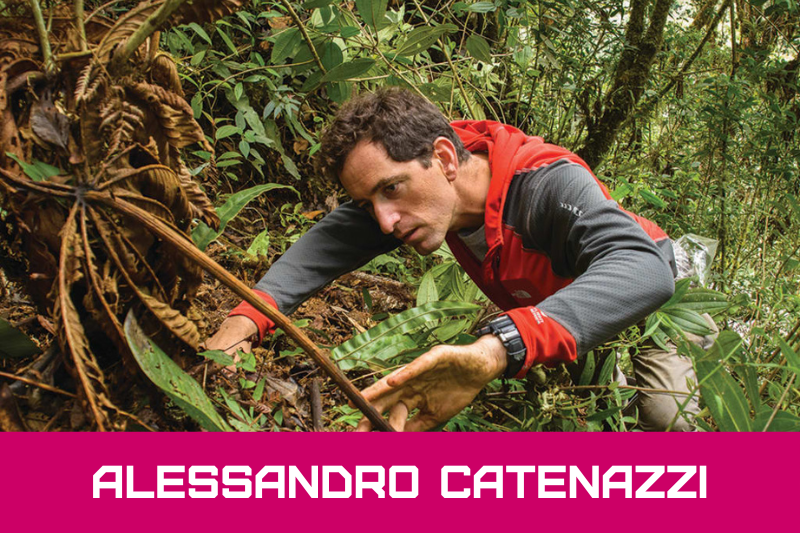
Dr. Catenazzi is an expert in frog ecology and conservation who has helped identify and describe 45 new species of amphibians. His research focuses on disease ecology to taxonomy, community ecology to physiology — with the goal of documenting and preserving biological diversity.
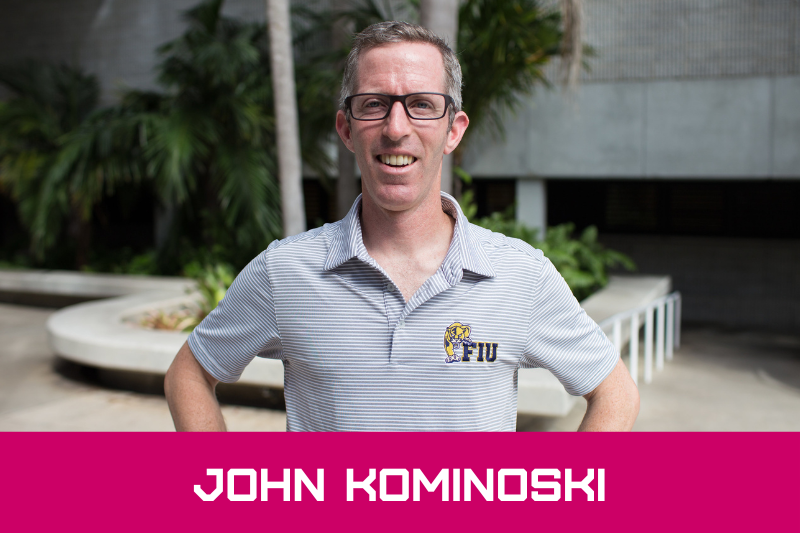
Dr. Kominoski is an ecosystem ecologist and biochemist, researching how changes in water chemistry affect the rates of organic matter processes and the net effects on carbon storage in terrestrial, aquatic and coastal wetland ecosystems. He is the lead principal investigator on the Florida Coastal Everglades Long Term Ecological Research Program.

Known as “Dr. Beach” for his annual rankings of U.S. beaches, Dr. Leatherman’s research focuses on beach erosion and rip currents. He has spent four decades researching and protecting the health of beaches. He has given expert testimony to U.S. Congressional committees more than a dozen times. Recently, he advocated to amend the Florida Clean Indoor Air Act to allow cities and counties to restrict smoking at public beaches.

Dr. Jayachandran is a soil scientist who has conducted groundbreaking research over the years on sustainable agriculture and crop production, the biodegradation of pesticides in soil and water, as well as soil-plant-microbial interactions to sustain soil health and environmental quality.

Dr. Anderson is a freshwater conservation ecologist who has spent her career studying the Amazon River. As principal investigator of several different collaborative initiatives across South America, her work connects experts on the river — the people who live, work and rely on it — to scientists, government authorities and local conservation partners.


Dr. Obeysekera is an expert on sea level rise. He served as chief modeler at the South Florida Water Management District, where he had a leading role in modeling of the Everglades and Kissimmee River and Everglades restoration projects. He was co-author of the sea level rise projections report published by NOAA for the National Climate Assessment.
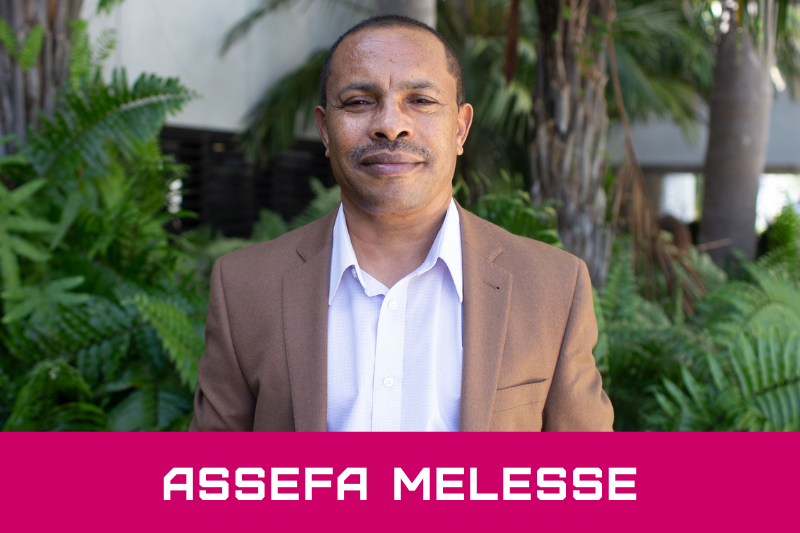
Dr. Melesse has been studying how to safeguard precious water resources for more than two decades. Specializing on hydrological modeling, his research has received funding from NASA, the U.S. Department of Agriculture and the National Science Foundation. He is one of the World’s top 2 percent of scientists in the Alper-Doger Scientific Index Rankings for International Water Resources Engineering.


Dr. Bray researches community forest management in Mexico and Central America and pursues interests in natural resource and ecosystem management in Latin America and globally.
News
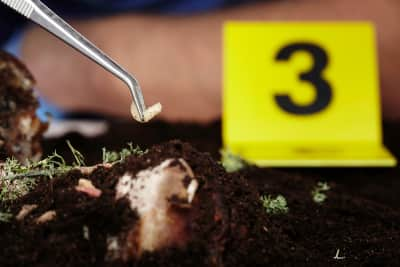
Discovery could give investigators a new tool in death investigations
Dec 1, 2025
How clean is the air we breathe?
Dec 1, 2025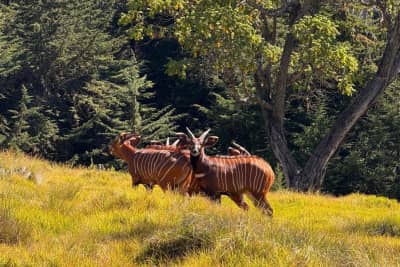
Special delivery: Mountain bongos return to Kenya
Nov 5, 2025
Do you know anoles? They’re having a moment
Nov 4, 2025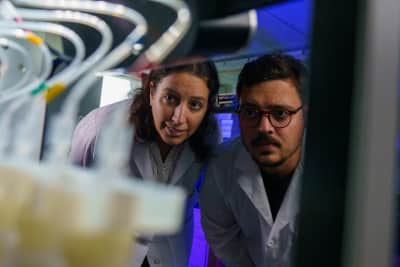
"Forever chemicals" found for first time in Miccosukee Indian Reservation
Oct 16, 2025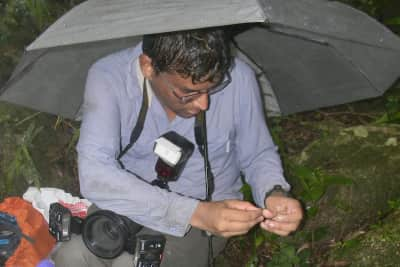
Botanist on quest to identify and name endangered orchids
Oct 13, 2025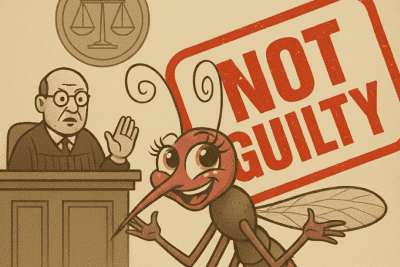
Wrongfully accused: research acquits mosquitoes as carriers for Lyme disease
Oct 6, 2025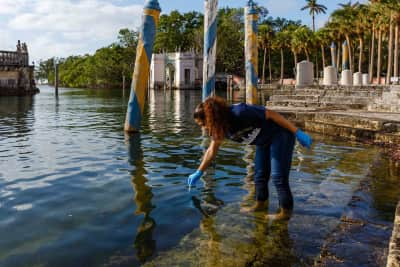
FIU calls upon citizen scientists to help collect data during King Tide
Oct 1, 2025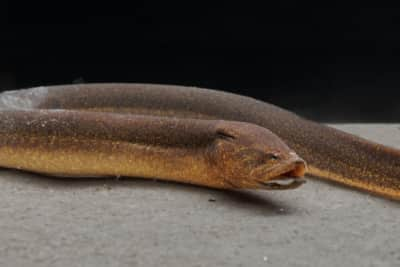
Spread of invasive swamp eels poses new risks to Everglades
Sep 29, 2025